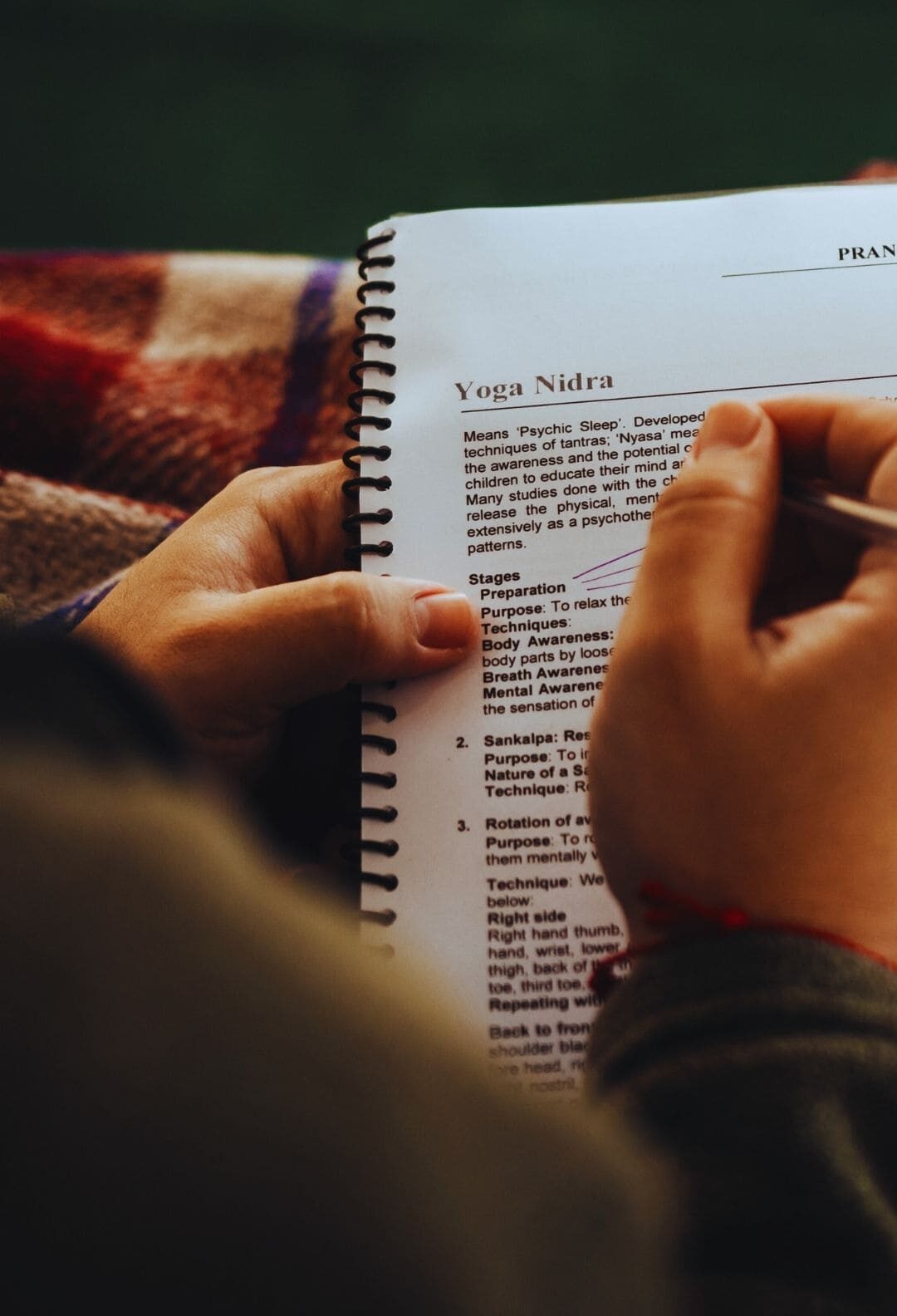200 Hour Yoga Teacher Training in Rishikesh: Discover yoga foundations
Rishikesh Yogis Yogshala offers best 200 Hour Yoga Teacher Training in Rishikesh is a transformative immersion right into the ancient art and science of yoga. Residing in the spiritual heart of India, Rishikesh has a peaceful background for this thorough program.
The program covers asanas, meditation, philosophy, and teaching techniques, ensuring a well-rounded understanding of yoga. Our 200 hour yoga teacher training programs are led by knowledgeable trainers. All the participants dig deep into their method, cultivating personal growth and the abilities needed to lead others on their yoga journey. Rishikesh, known as the “Yoga Capital of the world,” improves the overall experience. It gives an authentic and inspiring environment for aspiring yoga teachers.
A training open to all who wish to connect with the essence of yoga
An Overview of Our Course
An Introduction of Our Program – 200 hour yoga teacher training in Rishikesh envelops a holistic exploration of yoga’s core aspects. This thorough program is set in the backdrop of Rishikesh’s spiritual atmosphere. It provides a transformative journey for striving yoga teachers. The curriculum extends asanas, meditation, ideology, and effective mentor methods.
Rishikesh, snuggled in the Himalayan foothills, provides an excellent setting for self-discovery. This makes this 200-hour training course an extensive and enriching experience for those seeking to strengthen their yoga practice and mentor abilities.
Illuminating Your Yoga Journey Key Features of 200 Hour Yoga Training in Rishikesh
Illuminating Your Yoga Course – Distinctive Features of our 200 Hour Yoga Training in Rishikesh ensure an enlightening expedition into the significance of yoga.
Customized to brighten every element of your training, the program incorporates asanas, meditation, viewpoint, composition, and ingenious teaching techniques. Our experienced teachers blend ancient knowledge with contemporary understandings. It delivers a detailed and unique education. Rishikesh’s sacred mood conveys a distinct spiritual measurement to the training, raising the general discovering experience.
Focusing on individual development and the proficiency of effective 200 Hour Yoga Training in Rishikesh methods. This training not only boosts your practice but likewise encourages you to masterfully direct others on their private yoga trips.

Deconstructing the Practice - Explore the Key Components of 200-Hour Yoga Teacher Training in Rishikesh
Unveiling the Essence – Navigate the Core Elements of our 200 hour Yoga Training Rishikesh for an immersive exploration into the intricacies of yoga. Embark on a journey through a thoughtfully curated curriculum dissecting asanas, meditation, philosophy, anatomy, and innovative teaching methodologies.
Facilitated by seasoned guides, this distinctive program deconstructs each element, providing a nuanced understanding and fostering a profound connection with the practice. The sacred ambiance of Rishikesh serves as a unique canvas, enriching the exploration of these 200 Hour Yoga Training in Rishikesh fundamental components.
Join us to unravel and redefine your 200 hour Yoga Training Rishikesh experience, gaining expertise and transformative insight for both mastery and impactful teaching.
Nurturing Mind, Body, and Spirit -Dive into Our 200 Hour TTC Rishikesh Course Curriculum
Nurturing Mind, Body, and Spirit – allow yourself to experience the detailed educational program of our 200 Hour TTC Rishikesh Course Curriculum.
Our program transcends standard borders, cultivating holistic development. Explore mind-enhancing meditation, body-strengthening asanas, and spirit-enriching approaches.
All our courses are led by knowledgeable 200 Hour Yoga Teacher Training Course in Rishikesh trainers, this transformative journey integrates composition, mentor methodologies, and personalized advice. Explore the extensive harmony of these aspects, advertising not just the proficiency of yoga but the nurturing of your overall well-being.
With a concentration on mind, body, and spirit. Our 200 Hour TTC Rishikesh Course Curriculum educational program functions as a roadmap to self-discovery and encourages you to direct others by themselves through transformative courses.
Components of 200 Hour Yoga Teacher Training Course in Rishikesh
Foundation:
Thorough interactive discussions and practical sessions in group concept of incorporating personal Sadhana in Hatha Yoga classes will be shared.
- Understanding and discovering the centre of the movement in the human body that connects the lower body to the upper and the left to the right.
- Discovering the essential movement that is embodied in our human anatomy
- Pelvic movements, Lower body joint movements, Spinal movements, Shoulders joints movements, Arms movements, and Neck movements.
- Students will learn to explore the natural range of the human body in relation to daily life movements.
Groups of Asana
- You will cover 50 asanas along with integrated movements
- How to perform the asanas
- How to teach the asanas – the 3 stages of teaching pedagogy
- Counter indications
- How to use props in the asanas
Groups of Asanas
- Standing Balancing
- Standing Twist
- Standing Forward
- Standing Lateral
- Seated
- Inversion
- Spinal extensions
- Retorative
Yoga practices like Embodied Meditative Vinyasa integrate breathing exercises, movement, and meditation to foster awareness, presence, and mindfulness. A few of the main components of Personified Contemplative Vinyasa are listed here:
- Breathwork: Embodied Meditative Vinyasa possesses strong importance on cautious breathing techniques to unwind the mind, equilibrium the nerve device, and enhance the bond in between the breath and action.
- Movement: The exercises involve a variety of quick, fluid motions that are timed to the breath. Depending on the practitioner’s experience level and the class’s objectives, the motions may change.
- Mindfulness: The technique fosters awareness and presence, urging practitioners to stay in the present and give their complete attention to each movement and breath.
- Embodiment: The emphasis of the practice is on the connection of the body system, dash, and thoughts; it invites specialists to inhabit their physical bodies fully as well as to be in touch with their physical experiences as well as emotional states.
- Meditation: This form of exercise comprises times of sitting or lying down in a relaxed position to help practitioners develop their awareness, presence, and calm.
- Self-inquiry: The exercise may include times for the practitioner to reflect on themselves, encouraging them to connect with their feelings, thoughts, and beliefs.
- Intention-setting: Setting an aim or goal for the practice may be the first step in the process. Examples of such intentions or focuses include developing compassion, gratitude, or self-awareness.
Embodied Meditative Vinyasa is actually an all-inclusive strategy that integrates motion, breathwork, and mindfulness, as well as a reflection to nurture a feeling of awareness, presence, and affinity along with the body, mind, and also character.
Prana means ‘vital energy’ or ‘life force’. It is the force that exists in all things, whether consciously or unconsciously. Breath control could be generally referred to as Pranayama. Indeed, it is more subtle than air or oxygen, yet is closely related to the air we breathe. Pranayama must not be mistaken for simple breathing exercises targeted at increasing oxygen levels in the lungs as it is much more than that; it is getting together your conscious and sub-conscious mind while you breathe.
Breathing is used in pranayama to control the inflow of prana through the nadis, or energy channels, of the pranamaya kosha, or energy body. Pranayama utilizes breathing to impact the inflow of prana in the nadis or energy channels of the pranamaya kosha or energy body. Despite the fact that this interpretation appears to be correct in light of the practices involved, it doesn’t convey the entire meaning of the term.
The word pranayama is based on two roots of yoga: Prana and Ayama. The words “Ayama” and “Yama” often get mixed. To clarify further, the word Yama refers to ‘control’ and is used to indicate various rules or codes of conduct whereas Ayama is defined as ‘expansion’. While understanding the concept of Pranayama we often mix the words ‘Yama’ and ‘Ayama’ with the word ‘prana’. However, the precise word is ‘Ayama’ which has far more association than the word ‘Yama’.
The combination of prana and Ayama makes Pranayama that means ‘expansion of the aspects of prana’.
The techniques of Pranayama focus on providing a method for activating and regulating the life force in order to go beyond one’s normal boundaries or limitations and achieve a higher state of vibratory energy.
Pranayama:-
Introduction of Pranayama,
Preparations for Pranayama,
Basic Pranayama,
Observing the Yogic Breathing – Prana Vikshana,
Abdominal diaphragmatic breathing,
Kapalbhati,
Bhastrika Pranayama,
Agnisara kriya,
Ujjayi Pranayama 1,2 & 3,
Nadi Shodhana Pranayama 1 & 2,
Brahmari Pranayama,
Sheetali,
Shetkari,
Bandhas,
Mula bandha,
Uddiyana bandha,
Jalandhara bandha,
Maha bandha,
Mudras,
Gyana mudra,
Chinmaya mudra,
Prana mudra,
Shambhavi mudra,
Shanmukhi mudra,
Hridaya mudra,
NASIKAGRA DRISHTI,
ASHVINI MUDRA,
How to teach teaching a Pranayama class
Shat kriya:-
The Shat Kriyas referred as the six cleansing procedures of the body; a science that is exceedingly explicit and systematic.
The aim of hatha yoga and, by extension of the Shatkarmas, is to achieve physical and mental purification and balance by achieving harmony between the two major pranic flows, ida and pingala.
The Shatkarmas are also used to balance the three doshas or humour in the body: Kapha- mucus; pitta-bile; and Vata-wind. An imbalance of the doshas, according to both Ayurveda and hatha yoga, causes sickness. These practices are also utilized prior to pranayama and other higher yoga practices to cleanse the body and promote safe and successful spiritual evolution.
This powerful balancing technique must not be followed or practiced from an undefined source like books, random videos, or even tutors. If we must follow the tradition, only those instructed by a guru may teach others. While practicing it is essential to be personally instructed as to how and when to perform them according to individual needs.
Practices:-
Jal neti,
Sutra neti,
Kunjal,
Laghoo sankhaprakshalana
Yoga Darshana The Yoga School of Hindu philosophy was systematised in the Yoga-sūtras written by the Sage Maharshi Patanjali. Yoga means ‘union’. Patanjali is the compiler of the Yoga-sūtras and certainly one of the most important Vedic teachers in history. However, many people mistakenly attribute Patanjali as the founder of Yoga philosophy. The teachings of Yoga Darshana have existed since the time of the ancient Vedas in various aggregates. In fact the Mahabharata declares that Hiraṇyagarbha is the original teacher of Yoga; Hiraṇyagarbha (The Golden Source) here is a reference to Lord Brahma, the creator in the Hindu Trinity, the first guru; who also represents the Vedas and the Cosmic Mind. In the Vedas, Hiranyagarbha is identified as the Universal Being, the Creative Source of the Universe and the Vedic Sun God whose chief disciple is Rishi Vasishta. Yoga Darshana of Patanjali is closely related to the Sankhya Darshana of Kapila. Its philosophy is developed directly as an extension of the existing Sankhya Darshana. However, Yoga Darshana does differ from Sankhya Darshana on a few important concepts. The most distinct feature is the introduction of the Isvara principle or the God principle making Yoga Darshana a theistic school while Sankhya Darshana is a non-theistic school. Isvara is a special Self (Vishesha Purusha) who is not smeared by afflictions, actions, their fruitions and the domains of their accumulated propensities; who is omniscient; who is the guru even of the very first teachers; who is signified by the mantra OM (AUM) – this is the God of Yoga Darshana. Isvara is the guide and support of the yogis on the spiritual path. It is for this reason, the Yoga Darshana is also called Sa-Isvara Sankhya (Sankhya with Isvara) while the older Sankhya Darshana is called Nir-Isvara Sankhya (Sankhya without Isvara). Yoga Darshana says that human suffering and transmigration is caused by ignorance (avidya) and as in Sankhya Darshana, this ignorance is removed through discriminative wisdom and self-awareness that leads to spiritual liberation called kaivalya. This wisdom constitutes the realisation of consciousness or Self (Purusha) as separate from the body-mind matter (Prakriti) and thus abiding in one’s true nature. Therefore Raja Martanda, also called Bhoja Vrtti, a gloss on the Yoga Sūtras explains Yoga as the process of separation (viyoga) of the Self (Purusha) from the material nature (Prakriti). The Sankhyan emphasis on knowledge for the attainment of liberation is combined in Yoga Darshana with techniques that can be practiced to harness the mind towards an inward personal exploration and experience. This distinguishes Yoga Darshana’s emphasis from that of Sankhya Darshana. Patanjali says that through systematic practice of certain techniques one can restrain the mental waves and reach a state of absorption in one’s own true Self called samadhi. Remaining in one’s true pure awareness, steady wisdom dawns that removes all attachment with mental modifications – the false identities of the ego and intellect
yogaś citta-vritti nirodhah tada draśtuh svarupe avasthanam ‘
Yoga is the restrain of the activities of the mental-waves. Then the seer establishes in its true nature’. – Yoga Sūtras, 1.2 – 1.3</p
Patanjali outlines the spiritual practices in a systematic methodology called Ashtanga yoga (the Eightfold Yoga path). Ashtanga yoga is the primary spiritual practice of Yoga Darshana. Although principles of practices related to Karma yoga, Bhakti yoga, and Japa yoga are mentioned in the Yoga-sūtras, they are incorporated as part of the Ashtanga yoga system. Ashtanga yoga is a spiritual discipline that focuses on mental training in the sublimation of thought fluctuations, developing concentration, and meditation.
Yoga Sutras of Sage Patanjali
Sadhana Pada Of Patanjali Yoga Sutras
अथ योगानुशासनम्॥१॥
atha yoga-anuśāsanam ॥1॥
Now Then Yoga Is Being Explained
योगश्चित्तवृत्तिनिरोधः॥२॥
yogaś-citta-vr̥tti-nirodhaḥ ॥2॥
Yoga Is The Suppression Of The Modifications Of The Mind
तदा द्रष्टुः स्वरूपेऽवस्थानम्॥३॥
tadā draṣṭuḥ svarūpe-‘vasthānam ॥3॥
Then the Seer is established in his own essential nature.
वृत्तिसारूप्यमितरत्र॥४॥
vr̥tti sārūpyam-itaratra ॥4॥
At Other Times The Seer Appears To Assume The Form Of The Modifications Of The Mind
वृत्तयः पञ्चतय्यः क्लिष्टाक्लिष्टाः॥५॥
vr̥ttayaḥ pañcatayyaḥ kliṣṭākliṣṭāḥ ॥5॥
They Fall Into Five Varieties Of Which Some Are ‘Klista’ And The Rest are ‘Aklista’.
Vrrti-definitions are five-fold. They are either klista-obstructing (causing pain) or aklista-non-obstructing (not causing pain)
प्रमाणविपर्ययविकल्पनिद्रास्मृतयः॥६॥
pramāṇa viparyaya vikalpa nidrā smr̥tayaḥ ॥6॥
They are right knowledge, misconception, verbal delusion, sleep and memory.
प्रत्यक्षानुमानागमाः प्रमाणानि॥७॥
pratyakṣa-anumāna-āgamāḥ pramāṇāni ॥7॥
(Facts of ) right knowledge (are based on) direct cognition, inference or testimony.
विपर्ययो मिथ्याज्ञानमतद्रूपप्रतिष्ठम्॥८॥
viparyayo mithyā-jñānam-atadrūpa pratiṣṭham ॥8॥
Viparyaya Or Illusion Is False Knowledge Formed Of A Thing As Other Than What It Is.
शब्दज्ञानानुपाती वस्तुशून्यो विकल्पः॥९॥
śabda-jñāna-anupātī vastu-śūnyo vikalpaḥ ॥9॥
The Modification Called ‘Vikalpa’ Is Bases On Verbal Cognition In Regard To A Thing Which Does Not Exists. (It is a Kind Of Useful Knowledge Arising Out Of A Meaning Of A Work But Having No Corresponding Reality)
अभावप्रत्ययालम्बना वृत्तिर्निद्रा॥१०॥
abhāva pratyayālambanā vr̥ttirnidrā ॥10॥
Dreamless Sleep Is The Mental Modification Produced By Condition Of Inertia As the State Of Vacuity or Negation (Of Waking And Dreaming)
अनुभूतविषयासंप्रमोषः स्मृतिः॥११॥
anu-bhūta-viṣaya-asaṁpramoṣaḥ smr̥tiḥ ॥11॥
Memory is the recollection of objects one has experienced.
अभ्यासवैराग्याभ्यां तन्निरोधः॥१२॥
abhyāsa vairāgyābhyām tannirōdhaḥ ॥12॥
By Practice And Detachment These Can Be Stopped.
तत्र स्थितौ यत्नोऽभ्यासः॥१३॥
tatra sthitau yatno-‘bhyāsaḥ ॥13॥
Exertion To Acquire Sthiti Or A Tranquil State Of Mind Devoid Of Fluctuations Is Called Practice.
Abhyasa is the effort for being firmly established in that state (of Citta-Vrtti-Nirodha).
स तु दीर्घकालनैरन्तर्यसत्कारासेवितो दृढभूमिः॥१४॥
sa tu dīrghakāla nairantarya satkāra-āsevito dr̥ḍhabhūmiḥ ॥14॥
That Practice When Continued For A Long Time Without Break And With Devotion Becomes Firm In Foundation.
दृष्टानुश्रविकविषयवितृष्णस्य वशीकारसंज्ञा वैराग्यम्॥१५॥
dr̥ṣṭa-anuśravika-viṣaya-vitr̥ṣṇasya vaśīkāra-saṁjṇā vairāgyam ॥15॥
When The Mind Loses All Desires For Objects Seen Or Described In the Scriptures It Acquires A State of Utter Desirelessness Which is Called Detachment.
Ashtanga yoga
The eightfold steps of Ashtanga yoga are
1)Yama – Practice of cultivating the 5 values.
a. Ahiṃsā: Non-violence, non-hurtfulness, non-harming other living beings b. Satya: Truthfulness, integrity, sincerity c. Brahmacārya: Walking in awareness of the highest reality, chastity, sexual moderation d. Asteya: Non-stealing e. Aparigraha: Non-avarice, non-possessiveness
2) Niyama – Practice of the 5 observances. a. Śauca: Purity, cleanliness of mind, speech and body b. Santoṣa: Contentment, acceptance of others and one’s circumstances c. Tapas: Perseverance, austerity d. Svādhyāya: Study of Vedas and Vedic scriptures e. Īśvarapraṇidhāna: Contemplation of the Isvara (God), Presence of thought on Isvara.
3) Asana – Practice of sitting in a meditative posture with firmness and ease.
4) Pranayama – Practices of the regulation of breath.
5) Pratyahara – Practices of withdrawal of the sense organs.
6) Dharana – Practices of concentration of the mind.
7) Dhyana – Practices of meditation of the mind.
8) Samadhi – Practices of absorption of the mind
Advaita Vedanta
Body-Mind-Self Anatomy of Vedanta Millenniums ago, the Hindu sages (Rishis) of the Vedas declared that our true being, our true Self (Atman) is different from our body and mind. The Self is a distinct Witness-consciousness. In search of the true Self, the Vedic sages recorded profound observations of the different constitutions of the human body and mind in structured models. Yoga practices were developed to support and cultivate each aspect of the human constitution so that they become efficient instruments to help us discover our true Self. The Vedic sages imparted spiritual wisdom to their students using human constitutional models as a methotology to guide them through a process of self-enquiry and meditation. There are two important ways to organise the components of the body and mind; one is the model of ‘The Triple Bodies’ (Sharira trayam) and the model of ‘The Five Sheaths’ (Panchakosha). Both of these models are related. What is strikingly evident is the completeness of these models in representing all functional aspects of the human constitution. It is holistic and more comprehensive than the simplistic body-mind-spirit concept.
Sharira Trayam
The Triple Bodies The individual person is evidently a combination of the physical and psychological components. The physical is our body and the psychological is our mind. Vedanta teaches us to also look at our mind as another body. The mind is also a structure just like the physical body. Although it is made of thought-waves, the functioning of a certain type of thought-waves makes up different mental organs. In that way we can study them part by part. Vedanta says there are three bodies in total which is called in Sanskrit Sharira trayam (Sharira = bodies, trayam = triple). These three bodies are the ‘machines’ through which we experience life which is also in three states – waking state, dream state and deep sleep state. Atman
- Sthula Sharira – The Gross Body The first body is the gross body (Sthula sharira). This is our physical body which we can perceive through our senses. This is the part of us that we can see, touch, smell, hear and taste, just like any other gross object that we experience externally. The gross body undergoes six modifications and this process is known as shad-bhava-vikaras. The changes that affect our body do not affect the Atman, the true Self – the knower of all changes. The Atman is therefore different from the gross body as it has to be constant and changeless to be able to observe the changing phenomenon of the body.
- Sukshma Sharira – The Subtle Body The second body is the subtle body (Sukshma sharira). This is our vital – psychological body which we cannot perceive through our senses, but we can experience it as sensations, feelings and thoughts. of our energy, emotions, memory, ideas and identities. It is vital and mental. Since it is not perceptible to our senses like objects are, it is more subtle than Sthula sharira. The subtle body is in constant fluctuation; appearing and disappearing moment to moment. It is a body of energy and thought vibrations. It is subject to constant change, therefore, it is not the changeless Atman or Self. The Self is the knower of all modification of thoughts.
- Karana Sharira – The Causal Body The third body is the causal body (Karana sharira). This is our blueprint body which we cannot perceive as a physical object nor know it as a thought or feeling. It is totally not perceivable. However it is the cause of both the subtle and gross bodies. It is recognised only when it manifests in its mental and physical forms.This body is made of mental impressions called samskaras. It is also the seat of our karma and ignorance (avidya). The causal body is not constant as we can see in its effects (manifestations). New mental impressions can be gathered. Old impressions can be exhausted. It is the object of our awareness in our deep sleep therefore the Atman is not the causal body. Beyond the three bodies is the Atman or Self. You are this Self which is pure consciousness that witnesses everything. You are the witness of the gross, subtle and causal bodies. In deep sleep state you witness the causal body. Here you appear as the deep sleeper. The Self identified with the causal body is called the prajna (Self + causal body). In the dream state you witness the causal body and subtle body. Here you appear as the dreamer. The Self identified with the causal body and subtle body is called taijasa (Self + causal body + subtle body). In the waking state you witness the causal body, subtle body and gross body. Here you appear as the waking person. The Self identified with the causal body, subtle body and gross body is called visva (Self + all 3 bodies). The pure Self or Atman being the witnessing awareness of the three bodies and the three respective states is called Sakshi (Silent Witness). All three bodies undergo change. Self is changeless. This Self is expressed as ‘I’ (aham) and we normally refer the bodies are ‘this’ (idam).
Panchakosha
The 5 Sheaths The Sanskrit word Panchakosha literally means five sheaths (Pancha = five, kosha = sheath), because this model constitutes five composite layers. The five layers are
- Anna-maya-kosha – The food sheath
- Prana-maya-kosha – The prana sheath
- Mano-maya-kosha – The mental sheath
- Vijnana-maya-kosha – The intellectual sheath
- Ananda-maya-kosha – The bliss sheath
The word maya appended to each term here means ‘saturated’ and implies the preponderance of ‘anna’, ‘prana’, etc. in that layer. The five sheaths are a further division of the three bodies that we have seen earlier. This allows us to study the components of the three bodies with further depth and understand the relationship between each layer of our total constitution. The first sheath corresponds to the gross body. The second, third and fourth sheaths are part of the subtle body and the fifth sheath is the causal body. Gross body Subtle body
- Annamayakosha– The Food Sheath Annamayakosha (anna-maya-kosha) is the biological layer or sheath. The first layer refers to the physical body or gross body. However the Sanskrit designation Annamayakosha actually means the ‘food sheath’ (anna = food) simply because the physical body is made of nutrients such as protein, fat, minerals and other substances primarily derived from the food we consume. The science of Ayurveda describes this layer as having seven tissues, namely plasma (rasa), blood (rakta), muscle (mamsa), fat (meda), bone (asthi), bone marrow and nerve (majja) and reproductive fluid (shukra). Think about what yoga practices work with the Annamayakosha directly
- Pranamayakosha– The Prana Sheath Pranamayakosha (prana-maya-kosha) is the vital layer or sheath. The second layer is the energy field that permeates our body and mind. The Pranamayakosha contains prana or vital forces and karma indriyas or motor senses. The prana or vital force fuels all our physiological and psychological processes. The prana runs in channels called nadis. There are 72,000 nadis running throughout the Pranamayakosha. The most important nadis are the ida, pingala and sushumna nadis. Prana facilitate the exchange of information between the body and mind. Prana is classified into vayus (pranic air) based on its functions and movements. There are many prana vayus but the major are five kinds:
Panchaprana – The 5 Major Pranas
- Prana – relates to the respiratory and circulatory systems. It is the basic prana from which other pranas arise and thus gives its name to the group as a whole. It has a forward movement.
- Apana – relates to the elimination of waste through excretory systems and also to the reproduction functions. It has a downward and outward movement.
- Udana – relates to the vocal apparatus and facial expressions (speaking, singing, laughing and crying). It has an upward movement. It also plays a role in thought activity and in the shifting of the mind between the states of wake, dream and deep sleep.
- Samana – relates to the digestive and metabolic system. It is characterised by inward movement.
- Vyana – relates to muscular movement and the coordination and circulation of blood and energy to the entire body (blood stream )
Pancha Karma Indriyas – The 5 Organs of Actions The karma indriyas or motor senses control the movement of the body. They are also called organs of action or motion. There are five karma indriyas: • Speech (Mouth) • Grasping (Hand) • Locomotion (Feet) • Procreation (Genital) • Excretion (Anus) Think about what yoga practices work with the Pranamayakosha directly.
- Manomayakosha – The Mental Sheath Manomayakosha (mano-maya-kosha) is the mental sheath. The third layer is the psychological and emotional. This is the seat of thoughts and feelings. Perceiving and feeling are the key functional aspects. The faculties involved are jnana indriyas, manas and citta. The perceptive aspect of the mental body constitutes jnana indriyas or cognitive senses that receive and process external stimuli. They are also called ‘sense organs of knowledge’. There are five jnana indriyas: • Hearing – Sound • Feeling – Touch • Seeing – Form • Tasting – Taste • Smelling – Smell Manas is the surface mind which is involved in the feeling and thinking aspects. This is characterized mainly by thoughts and feelings related to the objects of perception. Thoughts include desires, imaginations, notions, sentiments and expectations and also their contrary thoughts which tend to create a state of doubt and indecision. Citta is the faculty of retention and retrieval of thoughts. Citta is also known as memory. The mental body is metaphorically likened to a relentless flowing river of thoughts and emotions. Think about what yoga practices work with the Manomayakosha directly.
- Vijnanamayakosha– The Intellectual Sheath Vijnanamayakosha (vijnana-maya-kosha) is the intellectual layer. The fourth layer is the seat of reasoning and identity. There are two main faculties: buddhi and ahamkara. Buddhi is the intellect that performs the functions of reasoning, judging, analyzing, and discerning and the mind with decision and direction. Buddhi can be cultivated and enhanced by logical thinking and proper knowledge. Ahamkara is the ego or the sense of individuality that is represented by the ‘I’ notion associated with the body and mind. It is a bundle of identities. This is your lower self or false self. The ego gives rise to the idea of ownership and doership in relation to the thoughts and feelings we have. The ego is really a composite of self-images.
- Anandamayakosha – The Bliss Sheath Anandamayakosha (ananda-maya-kosha) is the causative layer. The fifth layer is the causal body. This is the most subtle of all five layers of the human complex. It is primarily made of mental impressions or samskaras of all thoughts and feelings. These samskaras are not visible to the conscious mind. However, in deep sleep, we are aware of the fifth layer as a state of peace and devoid of thought experience. There, our mind (thoughts) is withdrawn into the causal body and remains dormant in its unmanifested state and so we do not have awareness of the remaining four layers. Since we experience a blissful rest in deep sleep, it is called ananda-maya-kosha wherein the Sanskrit term ananda means ‘bliss’. Samskaras are the blueprint for the rising of future thoughts and emotions. The most influential of all impressions is called vasanas. Vasanas are our deep driving desires that shape our personality, especially our inclinations, ambitions, attractions and interests. It molds the way we view life and influences, particularly our likes and dislike among other behaviors.
Respiratory system:-
*Introduction to the respiratory system
*Muscles of the respiratory system
*Breathing patterns and how to improve breathing patterns.
*Asanas and flow of breath.
*Pranayama and its impact on the Respiratory system.
*Channels of energy(Ida, Pingala, Sushumna.
Skeletal & muscular system:-
*Introduction to the skeletal system.
*Body wireframe.
*Types of the skeletal system.
*Asanas- align your body’s incorrect posture.
*Anatomical movements
*Anatomical planes of the body.
*Physiology of Stretching & flexibility
*Connective tissues.
*Understanding your muscle tissue during yoga practice.
When we are able to hold the mind in one place that is called concentration. The word Dharana is a Sanskrit word derived from the root dhri which represents ‘foundation’ or ‘base’. In the yogic tradition, Dharana belongs to the internal stages of raja yoga which is the path of mental and psychological discipline. Dharana follows the stage of pratyahara where the mind withdraws from the external objects and is embodied internally.
The mind has the power to separate from the senses and go deeper to create its own world while the senses remain outside. Differentiation between sensory awareness and mental awareness needs time with practice. Once we are able to understand this distinction then the mind will be able to dwell in other deeper states where the Dharna becomes intense. The practice of deepening mental awareness could also be referred to as Dharana.
The concept of Dharana is just not merely holding the thoughts running in our mind but bringing one’s awareness and consciousness to a state where the body’s and mind’s propensity are functioning together. The state of Dharana provides supreme relaxation, mental power, and a greater ability to concentrate. With regular practice and dedication, we become aware of our thoughts. With Dharana, we train our minds of understanding and deal with our surroundings. The greater our awareness the better will be our control of the distressing nature of our personality like anxiety, negative thoughts, fear, depression, emotions, and so forth.
Practices Taught in Our 200 Hours Yoga TTC:-
Yoga Nidra (Deep Relaxation technique),
Kaya Sthairyam(Body Stillness),
Ajapa Japa (Meditation on Spontaneous sound),
Chakra shuddhi (Meditation on energy Centers),
Antar Mouna (Inner Silence),
Chidakash Dharana(Conscious Head Space)
Level-Intermediate
- Understanding of Antaranga yoga (internal practice of yoga)
- Yoga Nidra (Art of Relaxation)
- Meditation on concentration and withdrawal of senses
- Kaya Sthairyam
- Ajapa Japa
- Antar Mouna
- Chidakasha Dharna
- Chakra Shuddhi
Level-Advanced
1. How to sequence a progressive class dynamic and restorative
2. Teaching Methodology
Beginning a Class
Classroom Management
Demonstration of Asanas in Class
3. Teaching Principles
Structure for Mindfulness - A Glimpse into Your Daily Schedule in 200 Hour Yoga Course India
Framework for Mindfulness – providing a glimpse into your daily timetable in the 200 Hour Yoga Course India. Our carefully crafted itinerary is a roadmap for mindfulness. Each day unravels with purpose, integrating vibrant asanas, reflection, and enhancing viewpoint sessions.
The routine is designed to nurture a balanced strategy, emphasizing not just physical toughness but also psychological quality. Guided by seasoned 200 hour yoga training course in Rishikesh trainers, this daily framework promotes a unified blend of discipline and self-reflection.
Immerse yourself in this 200 Hour Yoga Course India thoughtful regimen, as it becomes the scaffolding for your transformative journey. All this while promoting mindfulness and growing a much deeper link to the art and science of yoga.
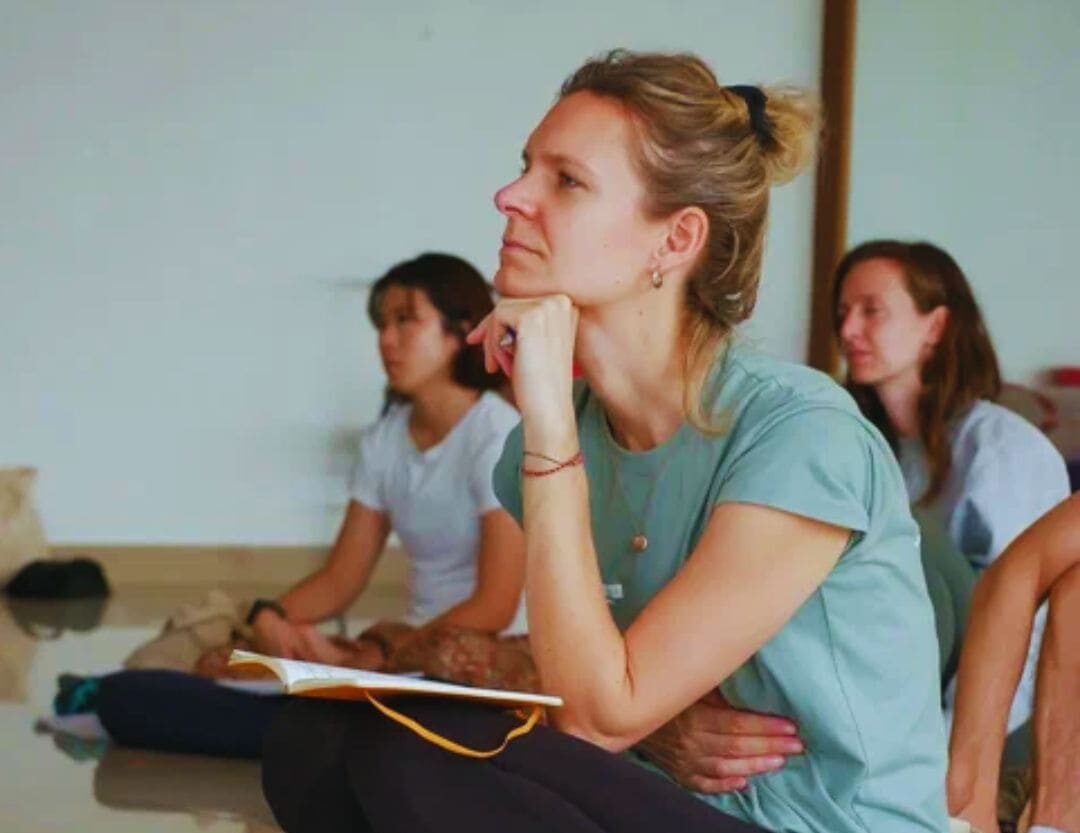
Daily schedule for 200 Hour Yoga Teacher Training Rishikesh India
(Monday To Saturday)
A typical day in our 200 Hour Yoga Teacher Training Rishikesh India comprises various elements – practical sessions and theory workshops every day. Every day, you will get the opportunity to immerse yourself in three practice sessions and three theory workshops. Each of these sessions will equip you with the knowledge and understanding of various facets of yogic wisdom.
Start your day by activating your mind and body and follow the most important and primary techniques of traditional Hatha Yoga.
We provide nourishing and balanced meals throughout the day. Breakfast prepared in our kitchen is nutritious, tasty, balanced and prepared from fresh nuts, vegetables, fruits and grains. During your stay with us, you would have an opportunity to taste traditional Indian delicacies.
In this theory cum discussion session we will get in to the roots of our yogic traditions and how we can maintain its authenticity by inculcating those principles in our teaching and life.
This session will help to understand the correct way of doing the poses enhancing your awareness of each posture with an insights to prevent accidents during a class.
This is a dedicated session on Anatomy & physiology and Teaching Methodology. It will focus on application of yogic practices in light of in-depth knowledge of human anatomy and physiology.
We serve pure vegetarian, ‘sattvik’, wholesome and nutritious. The food prepared in our kitchen includes freshies, ghee (clarified butter), fruits, legumes, and whole grains. The meals help you maintain the lightness of your body and helps to keep the mind calm.
We serve pure vegetarian, ‘sattvik’, wholesome and nutritious. The food prepared in our kitchen includes freshies, ghee (clarified butter), fruits, legumes, and whole grains. The meals help you maintain the lightness of your body and helps to keep the mind calm.
While you stay with us we encourage you the maintain journal of your day to day experiences. We believe that maintaining a record will definitely make your journey more mindful and insightful.
10:00 pm: Lights out
Additional Activities or Excursions included in the 200 hour Yoga Teacher Training Course
Activities

The FUN Fact! Get ready for a refreshing holy dip in the Ganges. We will take you down to the beaches of holy River Ganga for outdoor meditation and holy dip

Walk to the Holy Ganges for Outdoor Meditation and much more to experience.

Engage yourself with guided excursions to sites of historical and yogic significance in the town (Rishikesh walks!)

Caves! Visiting ancient meditation cave to experience its uplifting vibes!
Accommodation and Food provided during the 200 Hour Yoga TTC in Rishikesh
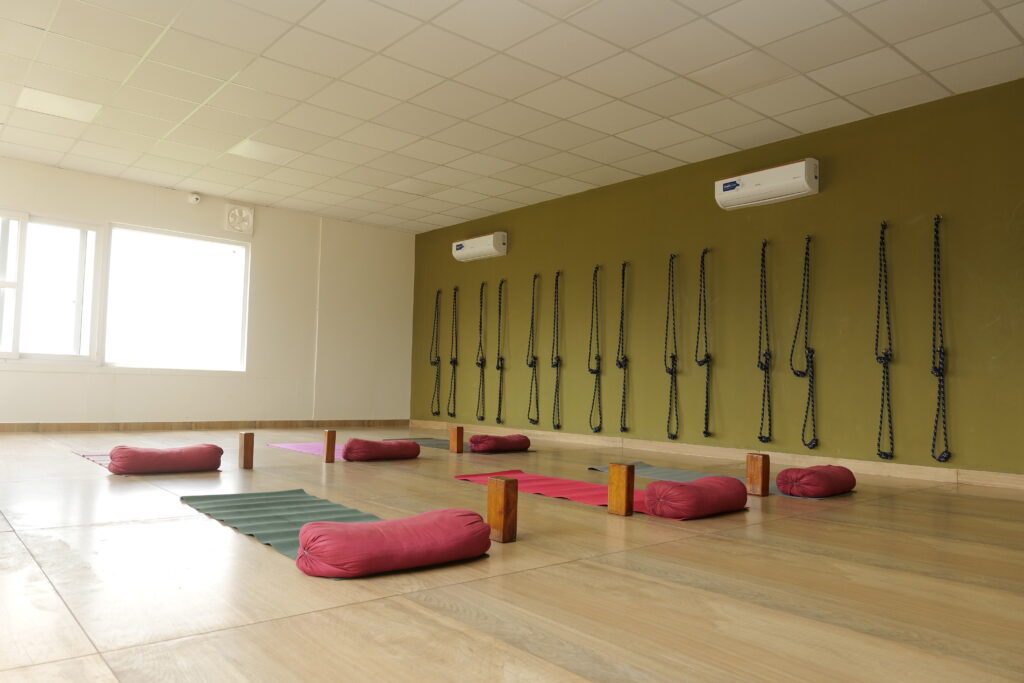


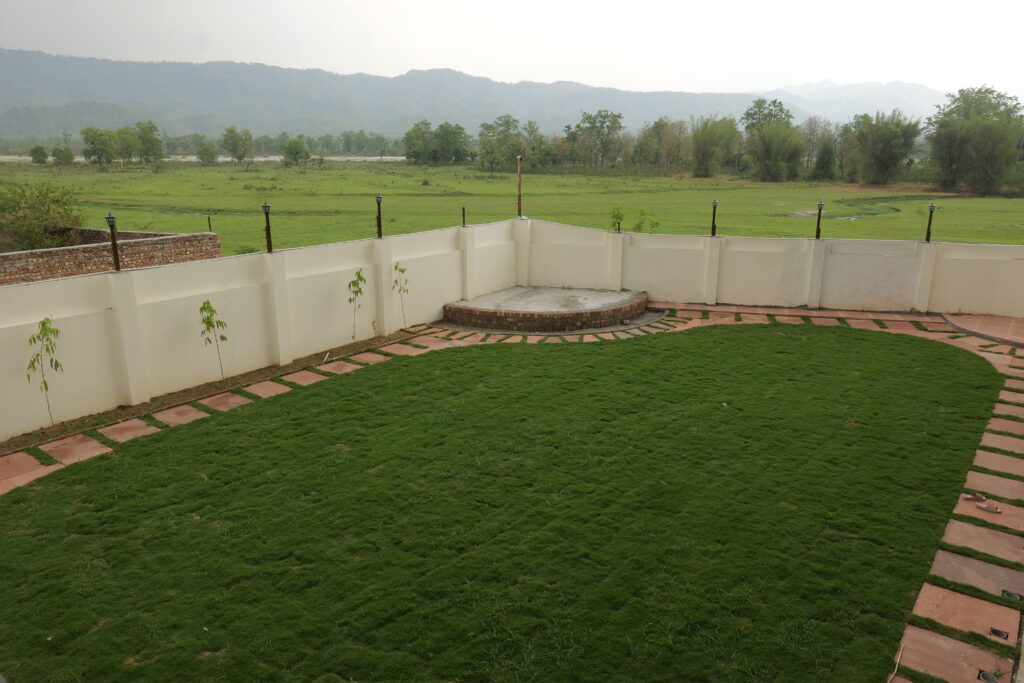
Dedicated Team
A committed and experienced teaching team
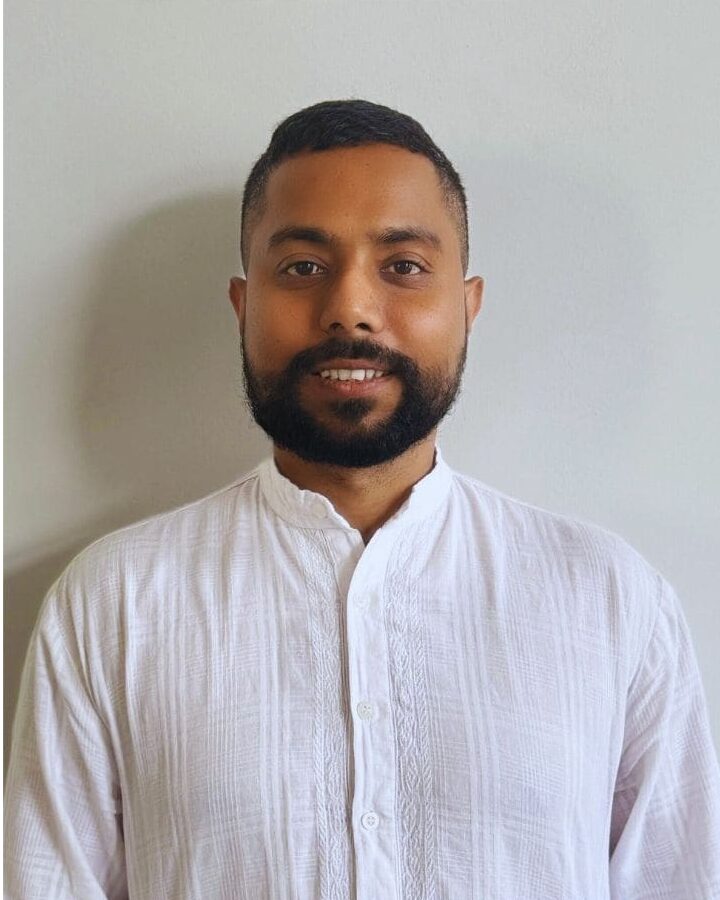
Uttam Ghosh – Founder
Hatha Yoga, Meditation & Pranayama, Yogic Philosophy
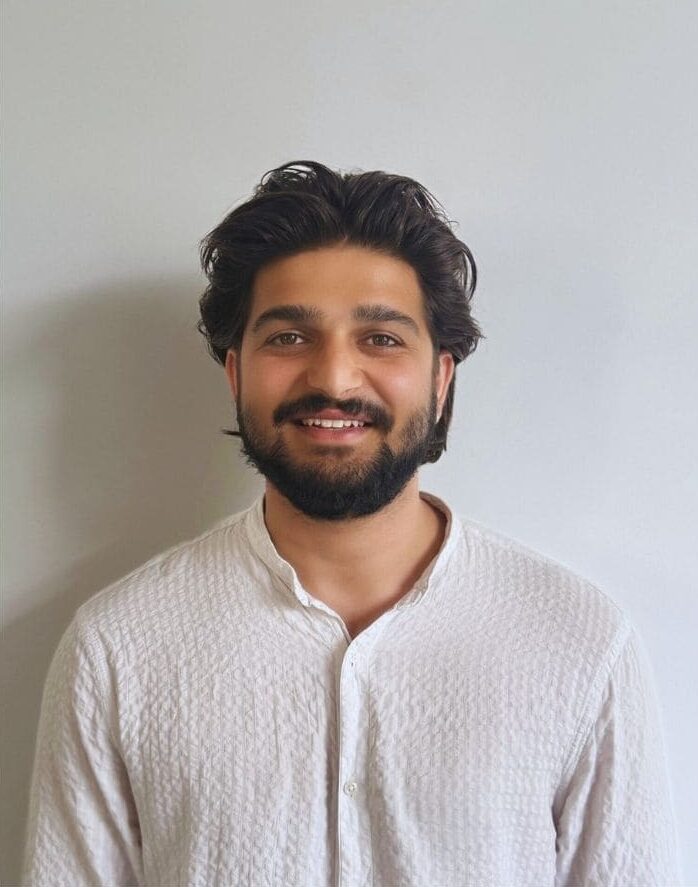
Ritesh Bhatt
Yoga Anatomy & Adjustment Alignment

Ekta Minocha
Hatha Yoga & Yogic Philosophy
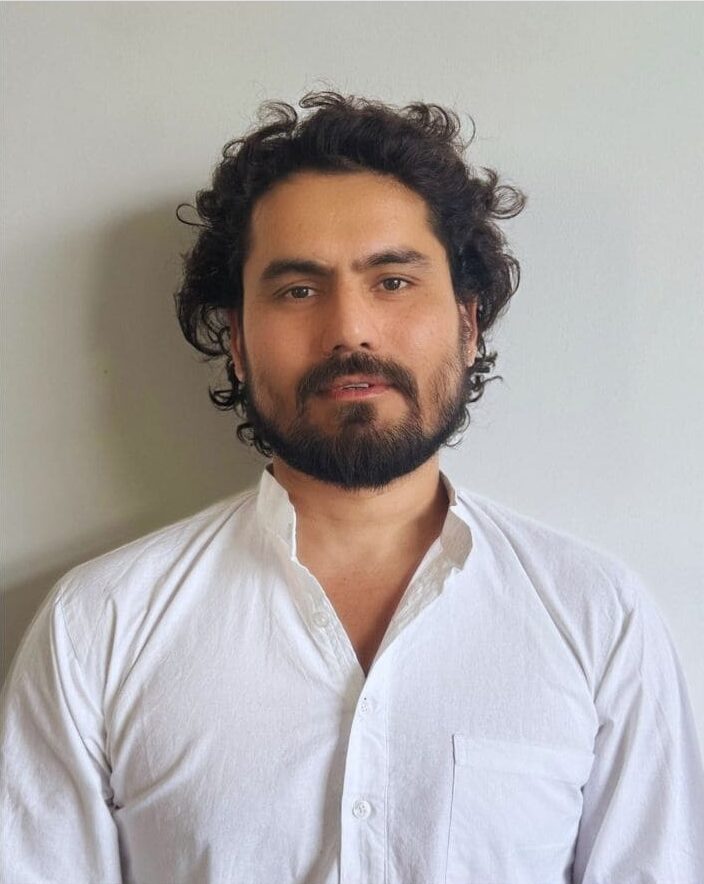
Deepak
Traditional Hatha Yoga
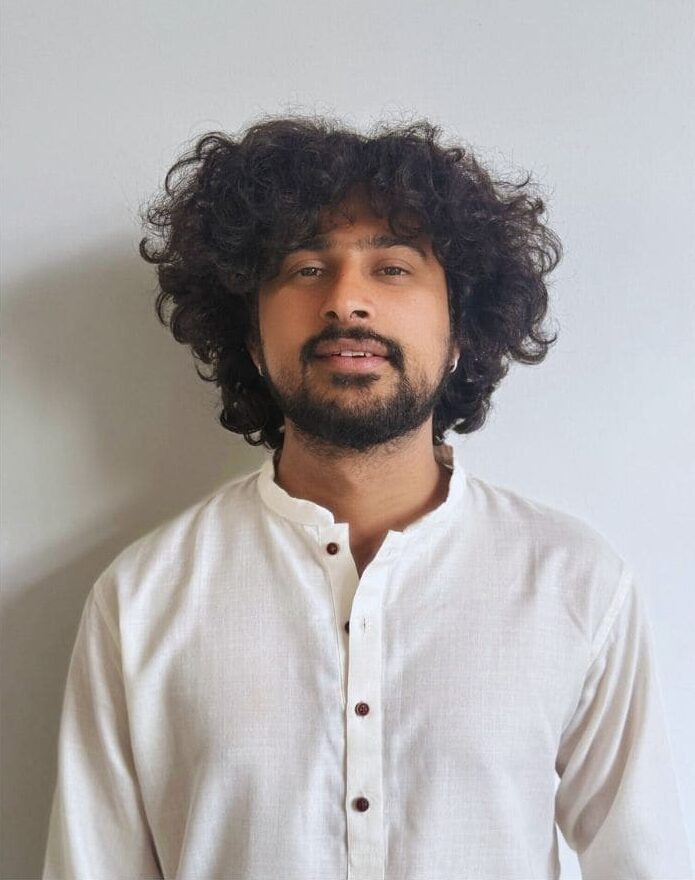
Naman
Mantra Sadhna & Chanting
RISHIKESH YOGIS YOGSHALA DEDICATED TEAM
Yoga Teacher Training in Rishikesh with our top instructors

Uttam Ghosh – Founder
Hatha Yoga, Meditation & Pranayama, Yogic Philosophy

Taniya
Hatha Yoga & Yoga Therapy

Yogacharya Deepak
Traditional Hatha Yoga

Raj Singh
Yoga Anatomy & Physiology

Kripa Ram Joshi
Mantra Sadhna & Chanting

Uttam Ghosh – Founder
Hatha Yoga, Meditation & Pranayama, Yogic Philosophy

Ritesh Bhatt
Yoga Anatomy & Adjustment Alignment

Ekta Minocha
Hatha Yoga & Yogic Philosophy

Yogacharya Deepak
Traditional Hatha Yoga

Naman
Mantra Sadhna & Chanting
Your Investment in Wellness - Fee Structure of 200 Hour Yoga Teacher Training Course in Rishikesh
Your Financial Investment in Health – Look into the Fee Structure of our 200 Hour Yoga Teacher Training Course in Rishikesh India. Our team relies on making your journey to health and wellness readily available and transparent. Our diligently created cost framework covers tuition, course materials, and lodging. We ensure a comfortable and immersive discovering atmosphere.
Our team prioritizes 200 hour yoga teacher training in Rishikesh cost without jeopardizing the premium quality of instructions. Furthermore, the financial investment includes access to distinctive workshops, explorations, and assistance throughout your training.
This holistic strategy mirrors our commitment to your complete health. This ensures economic investment not merely in a course but also in a transformative experience that resounds long after the training concludes.
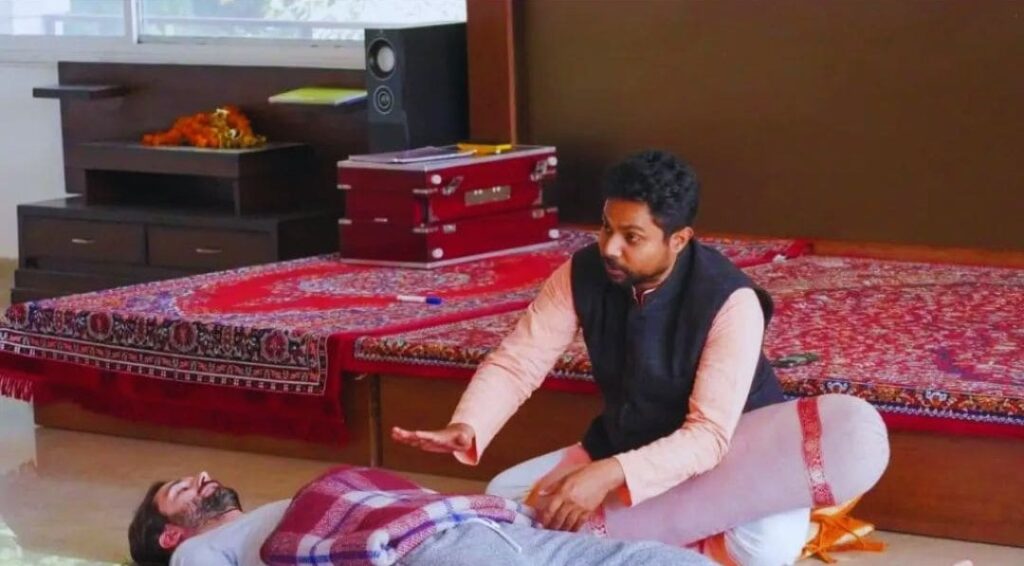
Upcoming 200-Hour Traditional Hatha Vinyasa Course
Fee And Schdeule
| Date From | Date To | Seats Left | Booking |
|---|---|---|---|
| 3rd Mar 2025 | 26th Mar 2025 | 0 | Full |
| 1st Apr 2025 | 24th Apr 2025 | 0 | Full |
| 1st May 2025 | 24th May 2025 | 0 | Full | 1st August 2025 | 24th August 2025 | 3 | Book now | 1st September 2025 | 24th September 2025 | 5 | Book now | 1st October 2025 | 24th October 2025 | 4 | Book now | 1st November 2025 | 24th November 2025 | 4 | Book now | 1st December 2025 | 24th December 2025 | 2 | Book now |
200-Hour Yoga Teacher Training Course Schedule in Rishikesh, India
(English)
| Date From | Date To | Deluxe Single Room | Twin Shared Room | Dormitory Room | Status | Booking |
|---|---|---|---|---|---|---|
| 1st September 2025 | 24th September 2025 | 1500 USD | NA | Ongoing! | Fully Booked | |
| 1st November 2025 | 24th November 2025 | NA | Full! | Fully Booked | ||
| 1st December 2025 | 24th December 2025 | NA | Early Bird Offer!! | Book Now | 1st February 2026 | 24th February 2026 | 1390 USD | 990 USD | 799 USD | Avail Early Bird Offer | Book Now | 1st March 2026 | 24th March 2026 | 1390 USD | 990 USD | 799 USD | Avail Early Bird Offer | Book Now | 1st April 2026 | 24th April 2026 | 1390 USD | 990 USD | 799 USD | Limited Seats! | Book Now | 4th May 2026 | 27th May 2026 | 1390 USD | 990 USD | 799 USD | Avail Early Bird Offer | Book Now | 1st June 2026 | 24th June 2026 | - | Scholarship Program | Book Now | 1st July 2026 | 24th July 2026 | - | Scholarship Program | Book Now | 1st August 2026 | 24th August 2026 | 1390 USD | 990 USD | 799 USD | Limited Seats! | Book Now | 1st September 2026 | 24th September 2026 | 1390 USD | 990 USD | 799 USD | Limited Seats! | Book Now | 1st October 2026 | 24th October 2026 | 1390 USD | 990 USD | 799 USD | Limited Seats! | Book Now | 1st November 2026 | 24th November 2026 | 1390 USD | 990 USD | 799 USD | Limited Seats! | Book Now | 1st December 2026 | 24th December 2026 | 1390 USD | 990 USD | 799 USD | Limited Seats! | Book Now |

Top Reasons to Enroll - Benefits of Joining 200 Hour Yoga School in Rishikesh
The benefits of Signing up with the 200 Hour Yoga School in Rishikesh are manifold.
To start with, Rishikesh’s spiritual setting improves the transformative experience. Our experienced educators bring treasures of knowledge, leading people using a comprehensive curriculum covering asanas, reflection, ideological background, make-up, and training approaches.
The immersive nature of the program advertises private development, building a solid structure for intending yoga teacher. Furthermore, the peaceful Himalayan setup supplies a kicked-back background for concentrated exploration. Joining our 200 hour yoga teacher training in Rishikesh ensures not only an expanded understanding of yoga. However also a life-altering trip of self-discovery and ability growth.
Top Factors to Enroll – The benefits of joining the 200 Hour Yoga School in Rishikesh are manifold.
Firstly, Rishikesh’s spiritual setting enhances the transformative experience. Our experienced teachers bring riches of knowledge, guiding individuals via a detailed educational program covering asanas, meditation, ideology, composition, and teaching methods.
The immersive nature of the program promotes individual growth, building a solid foundation for aiming yoga teachers. Furthermore, the serene Himalayan setup provides a relaxed backdrop for focused discovery. Joining our 200-hour yoga college makes sure not only a grown understanding of yoga. But also, a life-altering journey of self-discovery and ability growth.
Embodied Pranyama and Meditation
Traditional Hatha Yoga
Functional Yoga Anatomy
Education with purpose and impact
Beyond the Asanas - Explore Additional Activities and Excursions included in 200 Hour Yoga Training

Beyond the Asanas – Explore Additional Activities and Trips included in the 200-hour yoga Training for a versatile experience. Elevate your journey past physical postures as you engage in workshops, social tours, and immersive activities.
Look into meditation hideaways, and philosophical discussions, and get in touch with the vivid local area. These auxiliary experiences improve your understanding of yoga, fostering personal growth.
Embrace the picturesque environments of Rishikesh with outdoor sessions and excursions. With this, develop a harmonious mix of knowing and expedition. Beyond the mat, this training offers an all-natural method. Ensure with us a transformative and culturally enriched yoga immersion in the heart of India.
Anticipating Transformation: What to Expect from Rishikesh Yoga Tracher Training 200 Hour

200-hour yoga training in Rishikesh is an insightful preview right into a life-altering trip. Brace yourself for an all-natural change as experienced trainers direct you via an immersive curriculum covering asanas, meditation, viewpoint, composition, and effective training methodologies. Anticipate a genuine experience in Rishikesh, the yoga resources, improving your spiritual link.
Study self-discovery, see individual development, and the purchase of teaching abilities. This 200 hour yoga teacher training in Rishikesh is not just a training course; it’s an expectancy of profound change. This is laying the foundation for a union journey right into the world of yoga, both directly and expertly.
Nurturing Your Body and Soul - Accommodation and Culinary Delights during Your Yoga Course

Experience an alternative sanctuary for your heart and soul with the Lodging and Culinary Satisfaction during Your Yoga Course. Involve yourself in comfy and serene accommodations, offering you an excellent sanctuary for relaxation and reflection. Our attentively curated culinary offerings, personalized to support both body and spirit, boost your wellness.
Take pleasure in wholesome, authentic meals that match your 200 hour yoga teacher training in Rishikesh journey. We provide food that straightens with the concepts of natural living. This nurturing atmosphere ensures that every element of your keep, from vacation lodging to food. The aura contributes to a detailed and enhancing experience in your transformative yoga training course.

Begin Your Yoga Journey – 200-Hour Yoga Teacher Training in Rishikesh
Your 200-hour Yoga Teacher Training Course in Rishikesh is a personalized journey into the very essence of yoga — an immersion that transcends convention, weaving together ancient wisdom and contemporary techniques for practice and teaching.
Guided by experienced teachers, the program unfolds an integrated mosaic of āsana, meditation, philosophy, functional anatomy, and mentoring methodologies that cultivate clarity, confidence, and presence — both in your personal practice and your future role as a teacher.
Rishikesh, at the foothills of the Himalayas, deepens this journey by offering a unique setting for self-discovery. Here, you will deepen your practice, expand your understanding, and strengthen your teaching skills in an authentic spiritual environment.
This course is more than a refinement of skills — it marks a defining chapter in your personal and spiritual evolution, a turning point that resonates far beyond the 200 hours.
Reserve your spot now with the enrollment deposit!
By clicking the link below, you will be redirected to PayPal, where you can pay the enrollment deposit to secure your spot in our 200-hour course. This deposit will be deducted from the total course fee, which must be paid in cash directly at the school.
Book Now
Limited Seats
Journey with Rishikesh Yogis Yogshala
FAQs
Frequently Ask Questions
One way to do that is by enrolling in a 200 Hour Yoga Teacher Training Rishikesh course. However, before you take that step, you can prepare yourself by starting to read the books recommended by our teachers. Here is the list of books – Asana Pranayama Mudra Banda by Bihar School of Yoga, Light on Yoga by BKS Iyengar, Dharna Darshan by Bihar Yoga, School Anatomy of Hatha Yoga by David Coulter.
This will give you a solid understanding of the fundamentals of yoga and enable you to lay the proper groundwork for your practice. Additionally, you may also start with some self-practice by joining our online drop-in classes. This will allow you to get a feel for the practice and build your skills before you begin your 200 Hour Yoga Teacher Training in Rishikesh.
The 200 Hour Yoga Teacher Training Rishikesh is the basic to intermediate level. The course is done wisely it will help you to build a strong foundation for the future and a step forward to your journey. Yes, you may start teaching, however, the exceptional feature comes with dedicated practice and years of experience.
Rishikesh Yogis Yogashala`s team of teachers have intricately designed the curriculum of the 200 hour Yoga Teacher Training Rishikesh that covers yoga philosophy, meditation, yogic anatomy, pranayama, yoga adjustments alignment, teaching methodology. The students are offered to take a class to explore and experience the concepts of teaching yoga and transform into a classic yoga teacher.
Sessions are conducted on different themes and on different variations, for different age groups, for people having physical limitations. Rishikesh Yogis Yogashala stay connected with our students even after the completion of the course in case of any guidance needed.
The 200 Hour Yoga Teacher Training Rishikesh course will give a direction about how to conduct a class. The level of teachings depends upon your dedication to teach. As an institution, we suggest all our students to start sharing their knowledge as soon they have absorb all the learnings of the Teacher Training Course.
The yoga course will definitely bring out the best version of you and you may start with teaching the mint yoga aspirants around the world. Afterall, Yoga is never ending journey that makes us reach the different aspects of wisdom and knowledge through dedication and practice.
You can’t teach yoga after completing 100-hour Yoga Course. It will definitely give you an sense of what you should be learning and how you can continue to study and prepare yourself to become a successful Yoga Teacher.
Yes. Fee Payment could be done with using credit card debit card MasterCard or any international card. Options for PayPal and international transfer Western Union transfer, Transfer wise. There is also an option to pay in installments for those who need. Please get in touch with us to know more about it.
Rishikesh is spiritual city and considered to be one the safest city in India. Rishikesh attracts people from all over the world, the most of the locals welcome our guests whole-heartly and makes you feel like home. As it is spiritual place we recommended our students to adorn modesty in everything like clothes, behaviour etc) .
The ashram is absolutely a safe place for stay. Of course one should always be diligent and alert about her/his belongings and surroundings. The ashram lifestyle will encourage you to see the understand the minimal required of life and at the same time acquire great knowledge with alike people around. Rishikesh is a beautiful place and holds immense power to heal.
The meals we serve are pure vegetarian and very healthy nutritious for a yoga practitioner. We do have vegan options for all our participants and also gluten-free options on request.
For the classes any comfortable fitness or yoga attire (yoga tights, pants, shorts etc) wil work. While exploring Rishikesh you can wear any decent clothing keeping in mind to not offend the spiritually of the place.
Yes. Airport transfer from Delhi and Dehradun is available. We also arrange transfers from railway/ bus stations nearby Rishikesh on request. Please note that the transfer are at extra cost and not part of the fee. We request to put your request well in advance to avoid any last minute hassles.
AT RISHIKESH YOGIS YOGSHALA, INDIA
200 hour Yoga Teacher Training Rishikesh Course - What to Expect from This Course?
In Rishikesh Yogis Yogshala 200 hour Yoga Teacher Training Rishikesh Course, you will study and deconstruct asana (yoga poses), pranayama (breath work), meditation, applied anatomy, therapeutics, yoga theory & practice, yoga history & philosophy, basic Sanskrit, ethics & boundaries, and you will master the skills required to teach. With great precision and clarity, your trainer will cover the primary tools needed to teach yoga to others. In addition to studying the fundamental yoga postures, topics will includes:
- How to improve your own yoga practice
- How to teach a yoga pose
- Actions and alignment
- Purpose and use of props
- Restorative poses
- Observing and understanding bodies
- The art of teaching
- When and how to modify yoga poses
- How or whether to touch students and when to use adjustments
- How to effectively sequence a class
- Introduction to meditation
- Functional anatomy and physiology
- Meaning behind asana systems
- History of Yoga – major schools and movements
- How to develop and lead well-rounded yoga classes
- Fundamental and intermediate yoga postures
- Applied anatomy and kinesiology
- How to optimize your voice and vocal instrument
- How to advance your asana practice
- How to work with your challenges and limitations in yoga poses
- How to help your students modify poses to address challenges and limitations
- Methods for sequencing a class
- Yoga philosophy and mythology
- Yoga ethics and best practices
- Guidelines for establishing “codes of conduct”
- Considerations for inclusivity in yoga
- How to evolve as a yoga teacher, with transparency and grace


